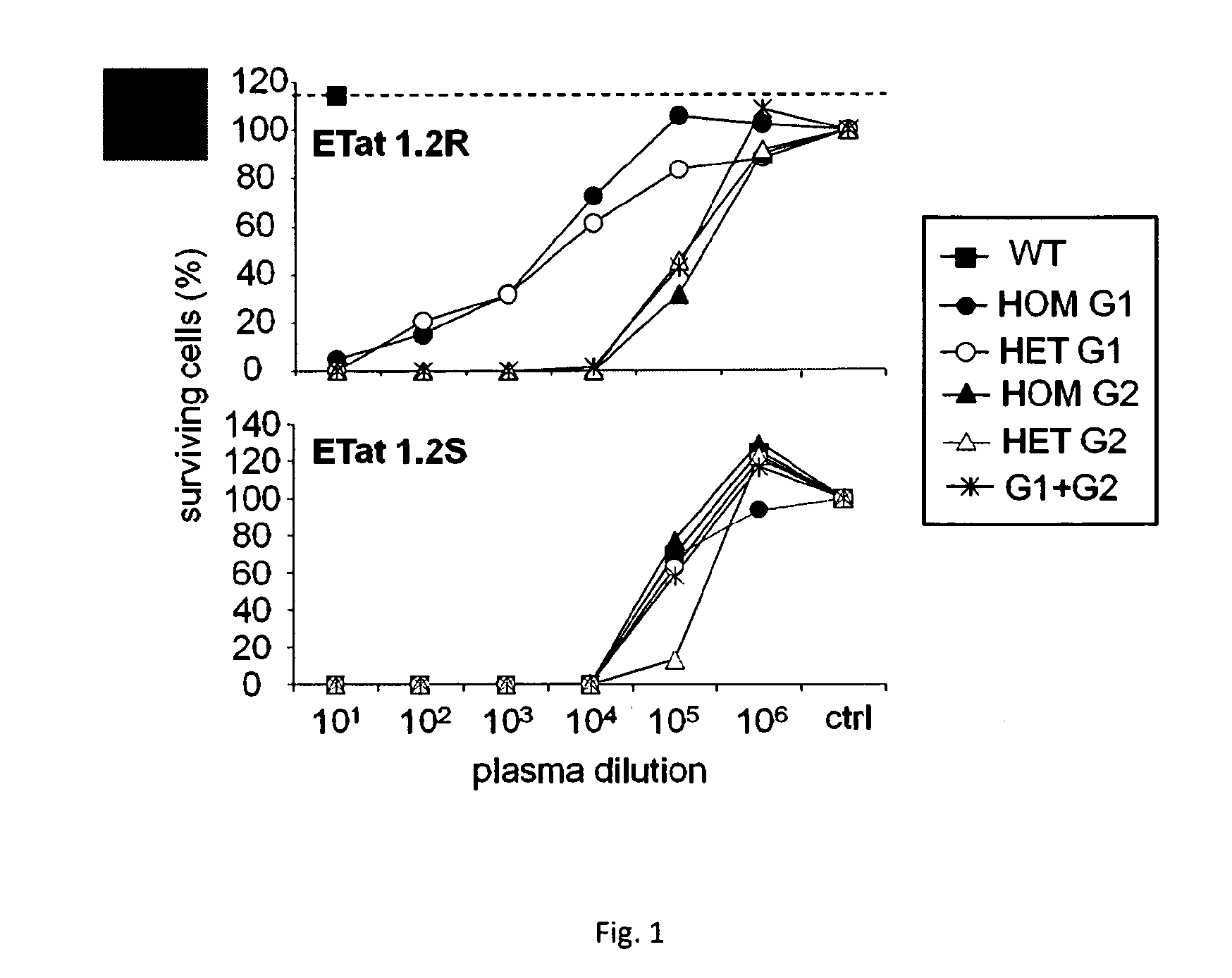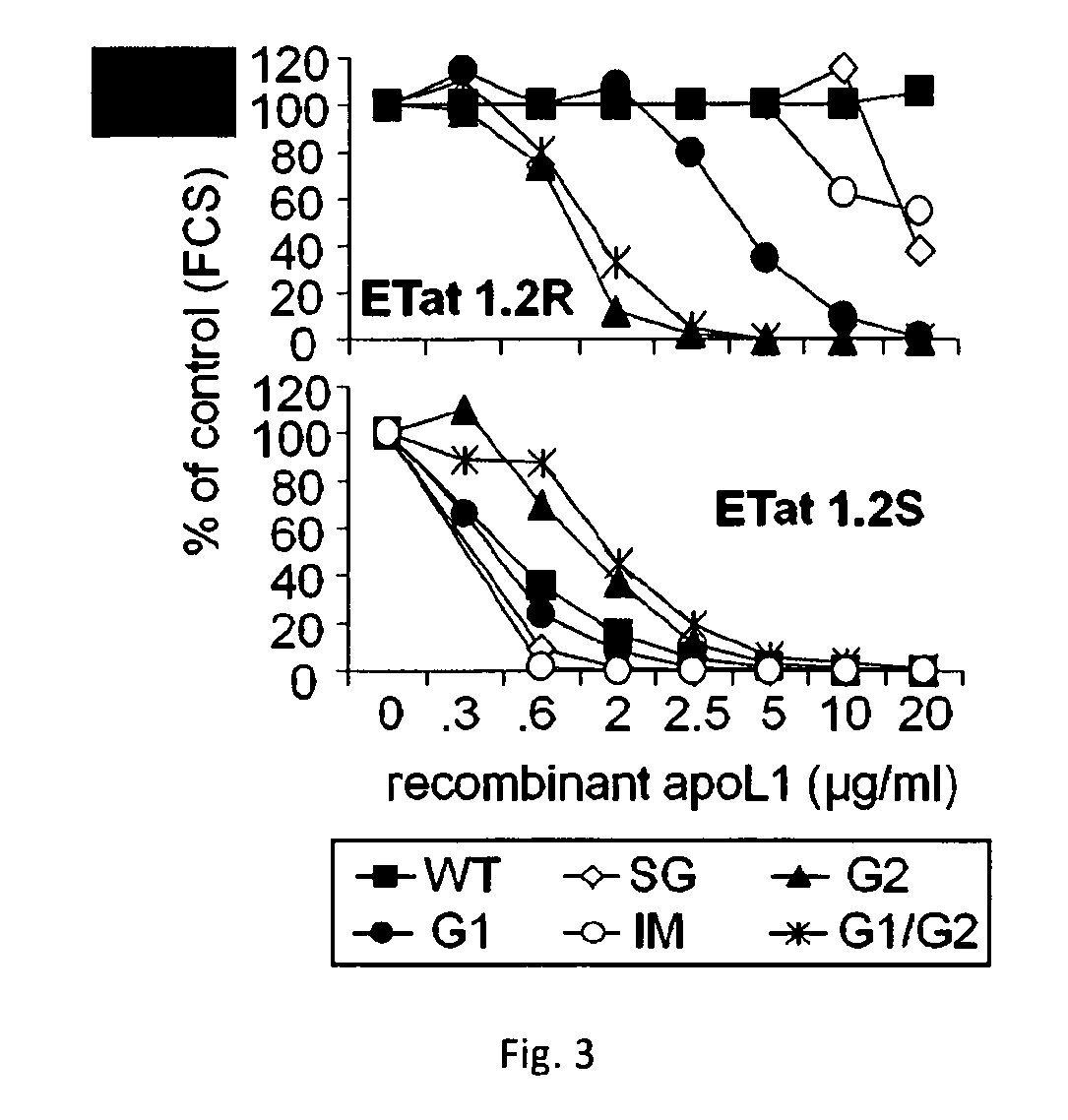Apolipoprotein l- i variants and their use
a technology of apolipoprotein and variant, applied in the field of molecular biology, can solve the problems of weak trypanolytic effect of this deleted apol1, infecting humans, sleeping sickness, etc., and achieve the effect of reducing blood cholesterol levels and reducing cholesterol-containing feed and/or fa
- Summary
- Abstract
- Description
- Claims
- Application Information
AI Technical Summary
Benefits of technology
Problems solved by technology
Method used
Image
Examples
Embodiment Construction
[0056]The serum protein apolipoprotein L-I (apoL1 ) is responsible for human innate immunity against Trypanosoma brucei brucei, because this protein kills the parasite by generating ionic pores in the lysosomal membrane. Two T. brucei subspecies (T. b. rhodesiense and T. b. gambiense) can resist apoL1 and therefore, infect humans and cause sleeping sickness. In T. b. rhodesiense resistance to human serum is linked to interaction of the Serum Resistance-Associated protein with the C-terminal region of apoL1. Mutations targeted to this region reduced its interaction with SRA, while preserving the activity of the ionic pore-forming domain. The inventors identified variants that did not bind to SRA, but acquired the ability to efficiently kill T. b. rhodesiense.
[0057]However, the inventors previously showed that mutants they produced in the L370-L392 leucine zipper lost in vitro trypanolytic activity. Mutants in the conserved G361-5364 motif still interacted with SRA, but lost trypanol...
PUM
 Login to View More
Login to View More Abstract
Description
Claims
Application Information
 Login to View More
Login to View More - R&D
- Intellectual Property
- Life Sciences
- Materials
- Tech Scout
- Unparalleled Data Quality
- Higher Quality Content
- 60% Fewer Hallucinations
Browse by: Latest US Patents, China's latest patents, Technical Efficacy Thesaurus, Application Domain, Technology Topic, Popular Technical Reports.
© 2025 PatSnap. All rights reserved.Legal|Privacy policy|Modern Slavery Act Transparency Statement|Sitemap|About US| Contact US: help@patsnap.com



